Definition of SWOT Analysis

The SWOT analysis is a business analysis technique that your organization can perform for each of its products, services, and markets when deciding on the best way to achieve future growth. The process involves identifying the strengths and weaknesses of the organization, and opportunities and threats present in the market that it operates in. The first letter of each of these four factors creates the acronym SWOT.
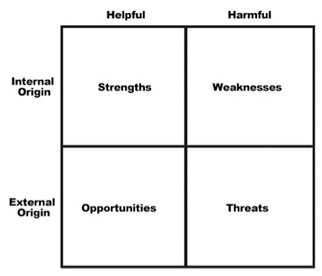 |
As a manager, your role in any strategic planning is likely to involve providing operational data to help assess the internal capabilities, and (depending on your job function) you may also be asked to provide market intelligence.
The completion of a SWOT analysis should help you to decide which market segments offer you the best opportunities for success and profitable growth over the life cycle of your product or service.
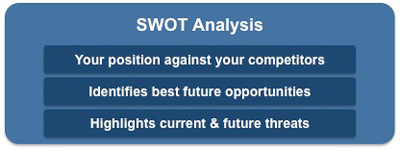 |
The SWOT analysis is a popular and versatile tool, but it involves a lot of subjective decision making at each stage. It should always be used as a guide rather than as a prescription and it is an iterative process. There is no such thing as a definitive SWOT for any particular organization because the strengths, weaknesses, opportunities, and threats depend to a large extent on the business objective under consideration.
After completing a SWOT analysis, your organization will then use an analysis tool such as the Ansoff Matrix to define the best growth strategy to achieve the chosen objective. If you are unfamiliar with the Ansoff Matrix or want to understand it in greater detail then download our free 'Ansoff Matrix' business strategy eBook.
Today's organizations find themselves operating in an environment that is changing faster than ever before. The process of analyzing the implications of these changes and modifying the way that the organization reacts to them is known as business strategy.
'Strategy is the direction and scope of an organization over the long term, which achieves advantage in a changing environment through its configuration of resources and competences' Johnson et al. (2009).
While your role as a manager is unlikely to require you to make decisions at the strategic level, you may be asked to contribute your expertise to meetings where strategic concerns are being discussed. You may also be asked to comment on pilot schemes, presentations, reports, or statistics that will affect future strategy.
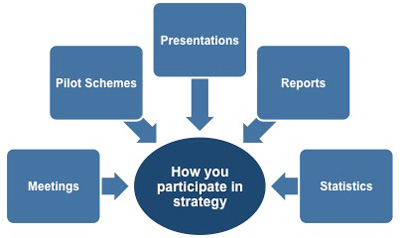 |
Whether you work in a large multinational corporation or a small organization, a good understanding of the appropriate business analysis techniques and terminology will help you to contribute to the strategic decision-making processes.
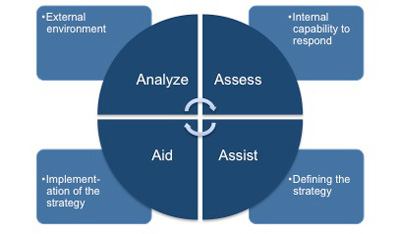 |
Typical scenarios where you could be asked to provide information and data for your organization's strategic decision making include:
• Analyzing the organization's external environment.
• Assessing the organization's internal capabilities and how well it can respond to external forces.
• Assisting with the definition of the organization's strategy.
• Aiding in the implementation of the organization's strategy.
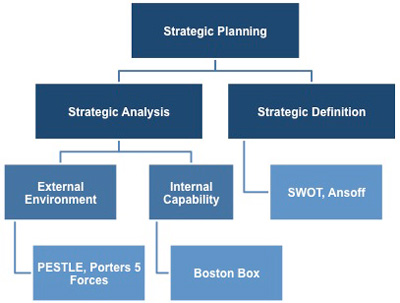 |
The diagram above shows where five widely used business analysis tools fit into the strategic planning process. Our Strategy Skills eBooks will give you a solid understanding of how these tools can be used, as well as an appreciation of their limitations.
This knowledge will enable you to take an active and productive role when asked to participate in the strategic decision-making process.
You may also be interested in: Definition of SWOT Analysis, Strengths, Weaknesses, Opportunities, and Threats, Internal Factors (Strengths and Weaknesses), External Factors (Opportunities and Threats), Matching and Converting, Advantages and Disadvantages and SWOT Analysis Example.



